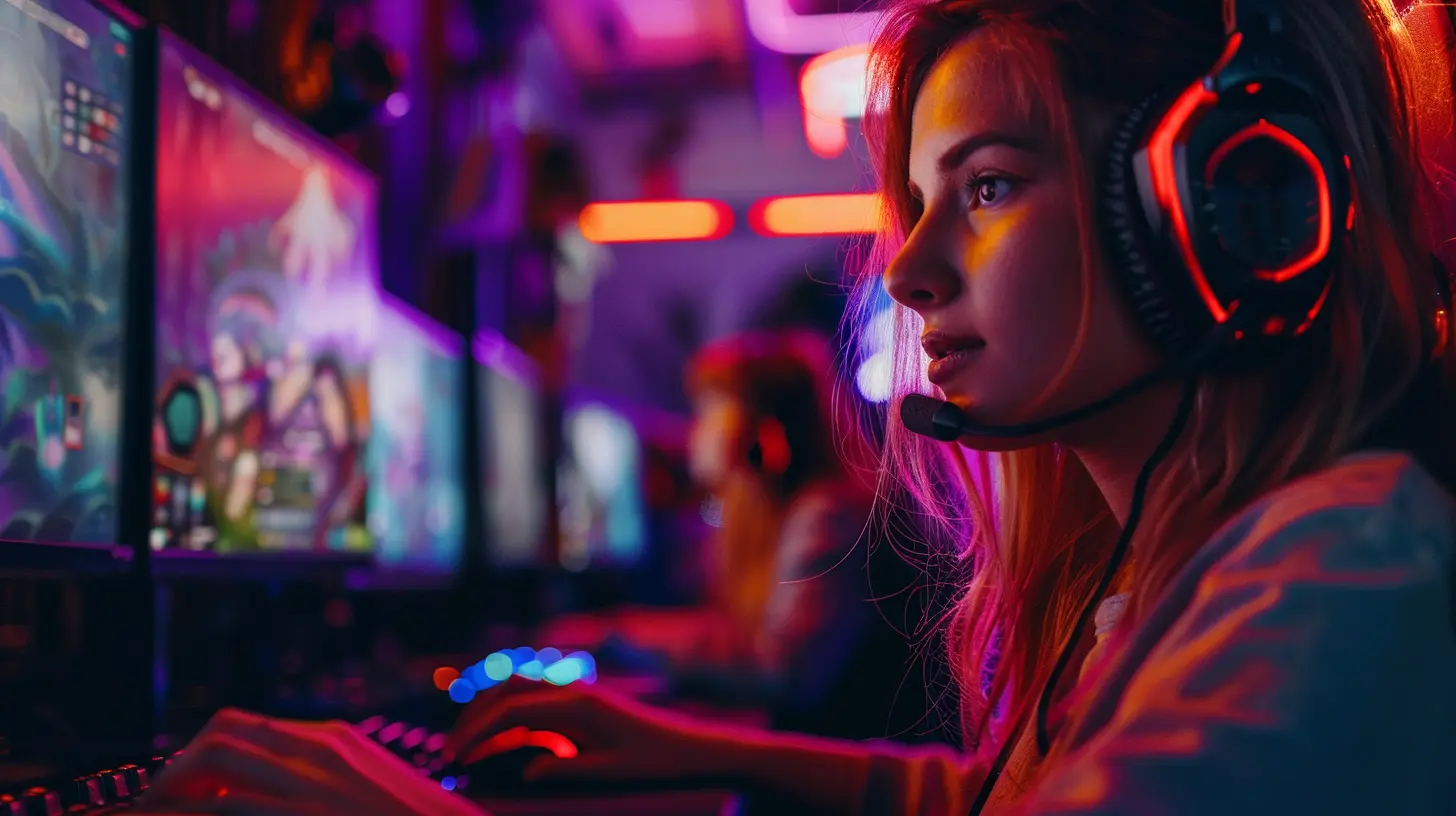How Developers Keep Meta-Gaming in Check
3 August 2025
Ever jumped into a multiplayer game and felt like half the players already knew the best weapons, hero picks, or mission routes before the match even started? Welcome to the world of meta-gaming. While it can make gameplay more efficient, it also risks draining the fun, creativity, and spontaneity that make games engaging in the first place.
In this article, we’re peeling back the layers on what meta-gaming really is and how game developers fight hard—often behind the scenes—to keep it from ruining your experience. So grab your controller (or keyboard), sit back, and let’s unpack how developers keep meta-gaming in check.
What Is Meta-Gaming, Really?
Let’s start with the basics. Meta-gaming, or “playing the meta,” refers to players using knowledge outside the immediate game environment to give themselves an advantage. The "meta" stands for "most effective tactics available." In simpler terms? It’s what the community has collectively discovered as the best way to win.Think about a battle royale where everyone rushes to grab the same high-tier loot spot, or a MOBA where a specific character combo dominates ranked matches. That's meta-gaming in action. When players stop experimenting and just follow the “winning formula,” the game can start to feel stale.
Why Meta-Gaming Can Be a Problem
On the surface, it might seem smart to use what's proven to work. But here's the catch: when everyone does it, it kills variety. Over time, a rigid meta leads to:- Repetitive strategies
- Predictable gameplay
- Decline in creative playstyles
- Frustration for new or casual players
- Shortened game life cycles
Sound familiar? We've all been there—facing off against that one hero that seems to be in every single match or dealing with a lopsided team comp because the meta dictates certain roles.
The Fine Line: Good Meta vs. Broken Meta
Now, not all meta is bad. A healthy meta can actually drive competition and encourage players to improve their skills. It becomes a shared language. But when the meta becomes too dominant or one-dimensional, it strangles the sense of discovery.Developers have to walk a tightrope here. Too much tampering, and they alienate loyal players. Too little, and the game gets stale. So, how do they strike the balance?
How Developers Monitor Meta-Gaming
1. Data Analytics FTW 📊
Game developers are data junkies. They pour over mountains of player behavior data to see:- Which characters are getting picked most?
- What weapons are being used?
- Who’s winning consistently?
- What’s the average time to victory?
From there, they spot patterns. For example, if a character has a 70% win rate across all skill levels, that’s a red flag. It could indicate that the hero isn’t just powerful—it's meta-breaking.
2. Community Feedback (Yes, Devs Read Reddit)
Believe it or not, developers are lurking in forums, Discord servers, Twitter threads, and subreddit posts. They’re reading your rants and suggestions. When enough players scream, “NERF THIS!” or “BUFF THAT!”, trust me, it’s on their radar.But it’s not just about listening to who’s screaming the loudest. Devs also look for nuanced feedback. They want to know if the meta is:
- Ruining fun
- Preventing new players from enjoying the game
- Dominating all playstyles
3. Test Servers & Experimental Labs
Many games (like Overwatch or Valorant) use separate environments—test servers—where they try out experimental changes without breaking the live game. Think of it like a sandbox where devs can toss in ideas and watch how players respond.This is where they:
- Tweak weapon damage
- Adjust ability cooldowns
- Rebalance character stats
It’s the safest way to shift the meta without causing chaos in ranked play.
Tactics Developers Use to Keep Meta-Gaming in Check
Okay, so now we get into the good stuff. How do developers actually shake up the meta without totally trashing the game? Let’s break it down.1. Regular Balance Updates
Nothing hits meta abusers harder than a good ol’ patch note. Regular updates help:- Weaken overpowered mechanics (nerfs)
- Strengthen underused features (buffs)
- Encourage experimentation
This keeps the gameplay loop dynamic and unpredictable, forcing players to adapt rather than blindly follow the meta.
👀 Pro Tip: If your main just got nerfed, take it as a challenge—not a death sentence.
2. Introducing New Content
New heroes, weapons, maps, or abilities often disrupt the meta in creative ways. Here's why it works:- Players take time to understand the new stuff
- Meta strategies get turned on their heads
- Old tactics may no longer apply
It’s like throwing a new ingredient in a recipe—it forces everyone to rethink the flavor combination.
3. Soft Counters and Hard Counters
In competitive games, developers often design characters or tools specifically to counter popular meta strategies. For example:- Introduce a sniper to counter rush-heavy teams
- Add a mobility character to beat camping
- Create utility heroes that can break shields
These counters serve as a built-in way to self-police the meta. When everyone picks the same thing, players naturally start favoring the counters.
4. Ranked Mode Tweaks
Some devs tweak ranked matchmaking rules to reduce meta abuse. This could mean:- Forcing role selection (so you don’t end up with five DPS players)
- Restricting duplicate heroes
- Introducing hero bans (like in League of Legends)
These changes make it harder for one meta to dominate and encourage strategic diversity.
5. Limited-Time Modes (LTMs)
Ever wonder why you randomly see new weird game modes pop up? LTMs aren’t just for fun—they help reset player habits.- They shake up player routines
- They encourage trying non-meta items or characters
- They offer rewards for playing differently
Smart, right?
Real-Life Examples of Meta Management
Let's look at a few games that have done a stellar job (or struggled) with meta shifts.Fortnite
Fortnite lives and dies by its constant updates. Epic Games often:- Vaults (removes) overused weapons
- Adds bizarre items like the Shockwave Hammer or Goo Gun
- Introduces wild map changes
These force players to adapt on the fly and stop relying on muscle memory.
League of Legends
Riot Games has mastered meta management. With over 150 champions, they:- Release balance patches every two weeks
- Introduce role-based matchmaking
- Publish detailed patch notes with developer insight
And yes—they’ve created entire champions just to counter current metas.
Overwatch 2
Blizzard took it to the next level with role locks and hero bans. Initially, players spammed DPS-heavy comps. Now, role locks force you to pick a balanced team (tank/support/DPS), which keeps the meta in check and gameplay more engaging.It’s Not Just On Devs—Players Play a Role Too
Let’s be honest: you and I are also responsible for meta-gaming. We chase wins, look up “best builds,” and min-max every stat.But here’s the thing—developers can only control so much. If players keep defaulting to the same strategies, the meta will always resurface like a stubborn weed.
When you try out off-meta strats or give underused characters a shot, you're not just goofing off—you’re actually helping the game stay healthy.
A Healthy Meta = A Healthy Game
At the end of the day, a shifting meta keeps things fresh. It keeps us on our toes and prevents gameplay from becoming robotic. Developers work tirelessly—often thanklessly—to curate that experience for us.Whether it’s through clever updates, hilarious patch notes, or introducing curveball mechanics, their mission is clear: keep us guessing, experimenting, and most importantly—having fun.
So next time your go-to strategy gets nerfed or your favorite weapon gets vaulted, don’t rage. Take it as a nudge from the devs to discover something new. Who knows? You might even start the next big meta.
Final Thoughts
Meta-gaming is inevitable in today’s hyper-connected gaming culture. But it doesn’t have to ruin the fun. With proactive developers and open-minded players, we can keep our favorite games exciting, competitive, and fair.Game devs aren’t just coding levels or crafting lore—they’re the unsung heroes fighting an invisible war against stagnation. And we, the players, are right there with them on the front lines.
So go ahead—break the meta. You just might change the game.
all images in this post were generated using AI tools
Category:
Game BalancingAuthor:

Pascal Jennings
Discussion
rate this article
1 comments
Kennedy Bowman
Great insights! It's reassuring to see developers prioritizing balance and player experience in gaming.
August 18, 2025 at 2:32 AM

Pascal Jennings
Thank you! Balancing player experience is crucial for a thriving gaming community.


